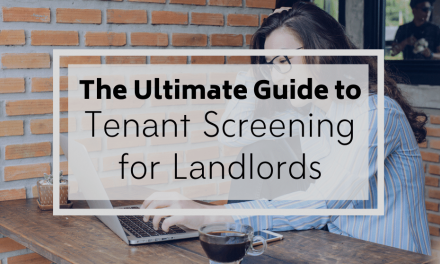
These real estate investing basic terms are key to understand when setting out in the world of real estate and navigating the market effectively. Key terms like cash flow, appreciation, and depreciation all directly impact investment decisions. Knowing buyer’s and seller’s markets, cap rate, and ROI are crucial for assessing property value. Mastering these basics empowers investors to make informed decisions and maximize profitability.
If you’re new to the real estate world, chances are that you’re familiar with at least some of the jargon and acronyms that are used in the industry. But knowing and understanding the meaning of basic terminology is essential if you want to navigate the real estate market effectively. It’s also useful for communicating with real estate professionals, negotiating deals, and working with other stakeholders. Whether you’re just starting out as a realtor, exploring investment opportunities, or delving into property management, having a grasp of these key terms will empower you on your real estate journey.
Real Estate Terms Every Beginner Needs To Know
Cash Flow
Cash flow is the lifeblood of any successful rental property investment. It represents the net income generated from a property after accounting for all expenses. Positive cash flow occurs when the income generated from a rental property exceeds the total expenses associated with it, resulting in a profit. On the other hand, negative cash flow happens when the expenses of owning and managing the property surpass the rental income, leading to a financial loss.
Appreciation
Appreciation refers to the increase in the value of a property over time, usually due to factors such as market conditions, demand, inflation, and improvements in the property or its surrounding area. It signifies the potential for an asset to be worth more in the future than its original purchase price.
Depreciation
While it might sound counterintuitive, depreciation is a beneficial concept for real estate investors. It’s an accounting method used to allocate the cost of a property over its useful life for tax purposes and allows investors to deduct a portion of the property’s value each year, reducing taxable income.
Learn more: What is Rental Property Depreciation?
Appraised Value
The estimated monetary worth of a property is known as its appraised value. It’s determined by a professional appraiser and is based on a thorough evaluation of various factors, including the property’s condition, location, comparable sales in the area, and current market conditions. Because it helps lenders determine the maximum amount they are willing to finance for a mortgage, and it provides buyers and sellers with a fair market value for negotiations, the appraised value is a critical figure in real estate transactions. It’s important to note that the appraised value may differ from the listing price or the amount agreed upon between buyer and seller.
Buyer’s Market
A buyer’s market occurs when there are more homes listed for sale than there are active buyers in the market. This situation favors buyers, providing them with a larger selection and potentially lower prices. However, if you’re a seller in a buyer’s market, it may take more time to find a buyer for your property due to increased competition among listings.
Seller’s Market
A seller’s market is a real estate market condition characterized by a shortage of available properties for sale, coupled with high demand from potential buyers. In such a market, sellers have the upper hand as there are more buyers competing for fewer homes, leading to increased property prices, shorter selling times, and often multiple offers on listings. This favorable condition for sellers can result in higher sale prices and a quicker turnover of properties..
Closing Costs
Closing costs encompass various expenses paid by the buyer when acquiring a property, in addition to the down payment. These may include mortgage insurance premiums, homeowners insurance, points, property taxes, and more. Usually ranging from 3 to 4 percent of the loan amount, they are essential to the homebuying process. While it’s possible for the seller to cover these costs in buyer’s markets, it’s become less common more recently.
Cap Rate (Capitalization Rate)
A cap rate is a crucial metric for evaluating the potential return on investment for a property. The cap rate is calculated by dividing the property’s net operating income (NOI) by its current market value or acquisition cost. This percentage represents the expected annual return an investor can anticipate from the property, assuming it is purchased entirely with cash and without any financing. A higher cap rate indicates potentially higher returns, but it may also signify increased risk.
Learn more: Property Management Math | Easy Equations for Reports and Analysis
Adjustable Rate Mortgage (ARM)
An Adjustable Rate Mortgage (ARM) is a type of home loan with an interest rate that isn’t fixed and can change over time. Initially, there’s a fixed-rate period, typically lasting from one to ten years, during which the interest rate remains stable and usually lower than market rates. After this period, the rate adjusts periodically, usually annually, based on a specific financial index linked to the loan. This index reflects broader economic factors like market interest rate changes. To determine the new interest rate the lender adds a margin to the index. Although ARMs offer lower initial rates, they carry the risk of potential rate increases, leading to higher future payments. Borrowers considering an ARM should carefully assess their risk tolerance and financial stability before committing to this type of mortgage.
Equity
Equity represents the ownership interest that an individual or entity has in a property. It’s calculated by subtracting the outstanding mortgage balance from the property’s current market value.
Earnest Money
When a buyer wants to demonstrate they are serious about purchasing a property, they put forward a deposit, otherwise known as earnest money. It’s a show of good faith and is typically paid after an initial offer is accepted by the seller. The amount of earnest money can vary but is often a percentage of the property’s purchase price. In the event of a successful sale, the earnest money is usually allocated towards the down payment or covering closing costs. If the sale falls through due to a valid reason outlined in the contract, the earnest money is typically returned to the buyer. However, if the buyer backs out without a valid reason, they may forfeit the earnest money to the seller.
Return on Investment (ROI)
ROI measures the profitability of an investment. It represents the percentage of profit gained or lost relative to the amount of money invested in the property. The ROI calculation takes into account both the property’s appreciation (increase in value) and the income generated from it (rental income). A higher ROI indicates a more profitable investment, while a lower ROI suggests a less lucrative venture.
Loan-to-Value Ratio (LTV)
The LTV ratio is an important consideration for lenders when providing a mortgage. It’s the ratio of the loan amount to the value of the property being purchased. A lower LTV ratio typically indicates lower risk for the lender.
Debt-To-Income Ratio (DTI)
When you apply for a loan, your debt-to-income ratio is assessed to determine the percentage of your monthly income that goes towards debt payments compared to your total earnings.
1% Rule
Real estate investors often rely on the 1% rule, which suggests that the monthly rental income of an investment property should equal or surpass one percent of the property’s total purchase price.
2% Rule
This rule suggests that a rental property’s monthly rental income should ideally be at least 2% of its total acquisition cost. Investors often use it as a guideline to quickly assess the potential profitability of a rental property, with the aim of generating positive cash flow.
Lease Agreement
A lease agreement is a legal contract that specifies the terms and conditions of renting a property. It specifies details such as the monthly rent, lease duration, and responsibilities of both the landlord and tenant. A well-crafted lease agreement is essential for a smooth landlord-tenant relationship.
Amortization
Amortization is the process of gradually paying off a debt, such as a mortgage, through regular payments. It’s structured to ensure that the outstanding balance decreases over time, ultimately leading to full repayment.
Due Diligence
Due diligence involves conducting thorough research and analysis before making a significant real estate investment. This includes property inspections, market research, financial assessments, and legal reviews. It’s a critical step to mitigate risks and make informed investment decisions.
Inspection Contingency
An inspection contingency, included in the purchase agreement, allows the buyer to arrange for a thorough inspection of the property. Following the inspection, the buyer can then discuss potential repair costs with the seller or, if necessary, choose to cancel the purchase agreement based on the findings in the inspection report.
Turnkey Investment Property
A turnkey investment property is a real estate investment that is ready for immediate occupancy or rental upon purchase, without the need for significant renovations or repairs. These properties are typically fully renovated, often by a professional management company, and are equipped with necessary amenities and systems. They are designed to be low-maintenance for the investor, making them an attractive option for those looking to generate rental income without the hassle of extensive property management.
Learn more: Understanding Turnkey Property Investing
1031 Exchange
A 1031 exchange, also known as a ‘like-kind’ exchange, allows real estate investors to defer capital gains taxes when they sell one investment property and reinvest the proceeds into another property of similar value. This strategy can be a powerful tool for building wealth through real estate while minimizing tax liabilities.
Learn more: Tax Deferred 1031 Exchange Basics for Investors
Homeowners Association (HOA)
An HOA is an organization that manages and enforces rules and regulations within a community or development. For properties located within an HOA, homeowners are typically required to pay fees for shared amenities and maintenance of common areas. It’s important for real estate investors to understand the rules and financial obligations associated with an HOA because it can impact the overall cost of ownership and potentially affect the property’s marketability. Additionally, compliance with HOA regulations is crucial to maintaining a positive relationship with the community and avoiding any potential legal issues.
Market Analysis
Conducting a thorough market analysis is essential for identifying the right investment opportunities. A market analysis typically involves evaluating factors such as local economic trends, property supply and demand, rental rates, and potential for appreciation. A well-informed market analysis also helps investors make strategic decisions about where to invest for maximum returns.
Mastering Real Estate Basics
Understanding these real estate investing terms and the associated terminology will empower you to make informed decisions, navigate transactions successfully, and maximize the profitability of your real estate portfolios. By mastering these fundamentals, you’ll be able to confidently navigate the dynamic world of real estate.





